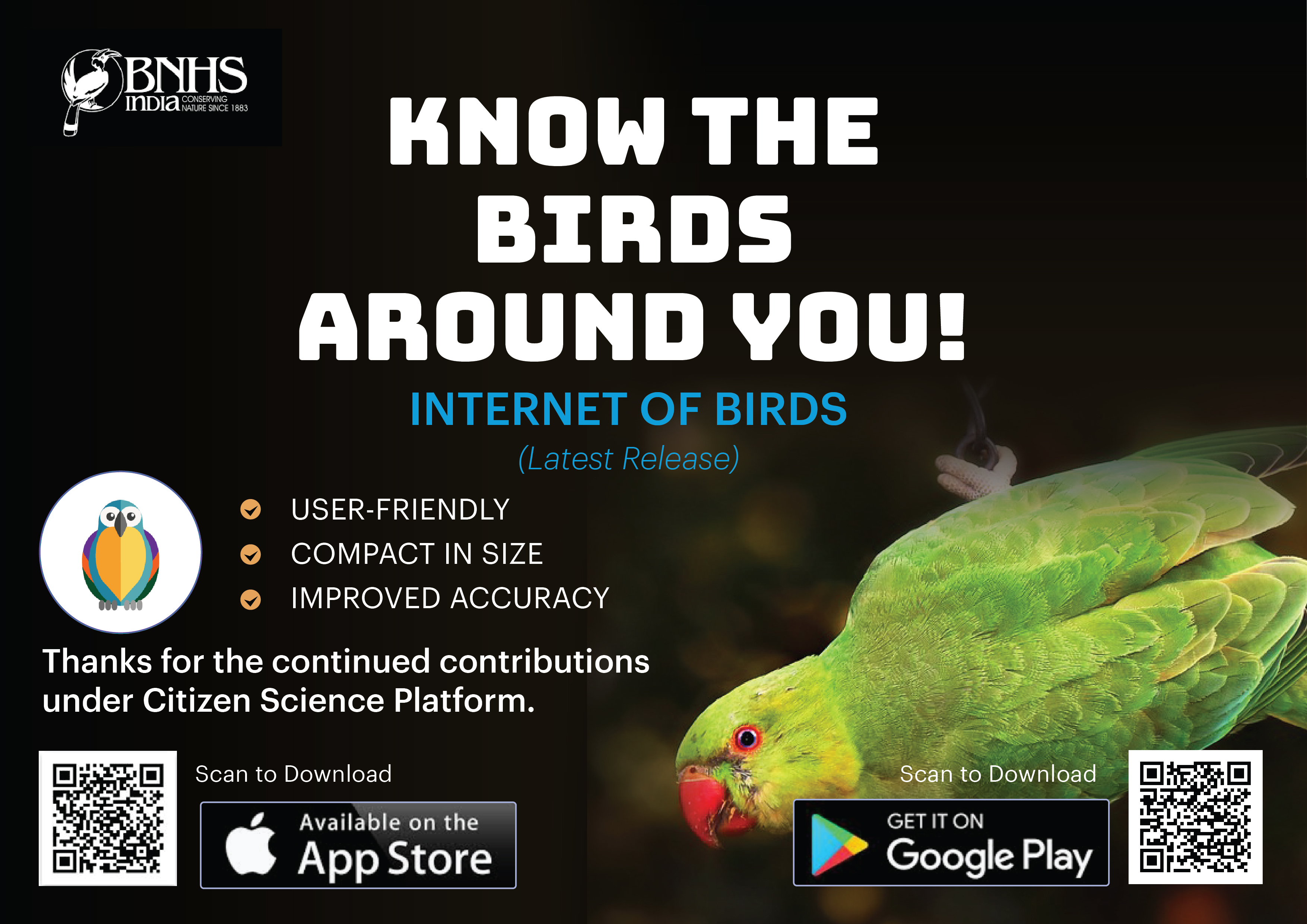

World Environment Day
2020
Amidst the Lockdown, Birding Soars

A passionate Pokemon Go player, Conner Brown, a law student at Stanford University, finds birding to be a real-life version of the Pokemon Go game. He has taken to birding with the same zeal as playing Pokemon Go with his brother, says Los Angeles Times.
Social distancing has placed huge restrictions on our daily lives. Looking for an alternative to de-stress, people across geographies and age groups have discovered a worthy passion in birding. Waking up to the chirping of birds every morning has opened their eyes to the world of birds around them.
Technologies like artificial intelligence are further enhancing the experience of amateur birdwatchers by helping them identify birds. The Internet of Birds app developed by Accenture Labs in partnership with BNHS, now available on Android devices as well, is a good example of that.
“The Internet of Birds app uses a citizen science approach by helping amateur birdwatchers identify nearly 600 species of birds found in the Indian subcontinent,” says Dr. Raju Kasambe, assistant director of education at the Bombay Natural History Society (BNHS).
The Internet of Birds is the first platform of its kind to use the power of Deep Learning and Image Recognition to identify birds from the Indian subcontinent. It allows citizens to participate effectively in the Citizen Science Program. All you need is a cell phone, and you can go about identifying new species, like an expert ornithologist.
“The Internet of Birds app is a good example of artificial intelligence augmenting humans to spread awareness of the biodiversity around us,” said Sanjay Podder, managing director and Growth Markets lead for technology innovation at Accenture. “Human-machine coordination is amplifying the productivity and creativity of humans. Internet of Birds can offer both education and entertainment to citizens, while they also get to contribute towards the larger social purpose of conservation of birds.”

In India, interest in birding piqued with reports of thousands of flamingos being spotted in the Navi Mumbai wetlands. While a month of reduced pollution and noise cannot cause a spike in the bird population, the reduced pace of life has certainly made us more aware of the birds around us. That it’s the breeding season with increased activity among birds has helped.
Dr Raju Kasambe added: “I now spend a considerable part of my day on the rooftop, capturing images and videos of birds. I have contributed more than 35 number of species via the bird checklist program over the last couple of months.”
Whether it is the cooing of the Asian Koel or the vibrant colours of flamingos and parakeets, this world that had always existed right outside our windows, was until now shrouded in a “cloak of invisibility”. Dazed by neon lights and numbed by the high decibel noise of city traffic, we were blind and deaf to these fluffy, furry creatures flying all around us. Almost for the first time, our children are noticing and recognizing the house sparrow, the rose-ringed parakeet, the black kite, or occasionally the red-whiskered bulbul and the common myna.
Millions are noticing. They want to know more. And they want to share. Demand for online courses on bird watching is growing, with hundreds ready to enrol for paid online webinars. Many are contributing photographs and videos on Facebook, Twitter and Instagram. Experts are creating audio-visuals that can be used to identify birds in residential areas.
India is home to nearly 12.5 percent of avifauna, close to 1300 species. Identifying all these species is a herculean task. A city like Mumbai itself is home to approximately 300 species. With most of us limited to our homes, this is an excellent time to get involved in this grand enterprise. And technology offers to be a force multiplier.
"Blending technology and science is vital for Next Gen. The Internet of Birds provides such a tool for amateurs. It can connect amateurs to the backyard bird diversity and make them realize how valuable native trees are for attracting birds even in densely populated urban areas," said Dr. Deepak Apte, Director of Bombay Natural History Society.
